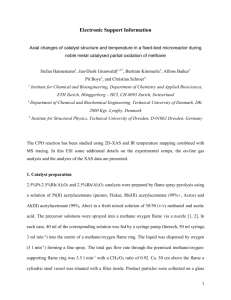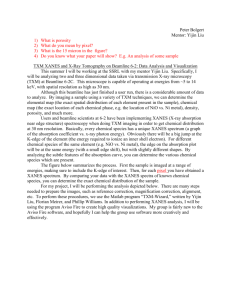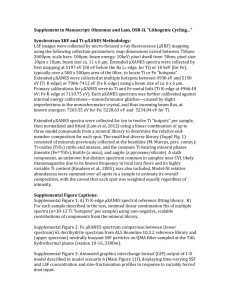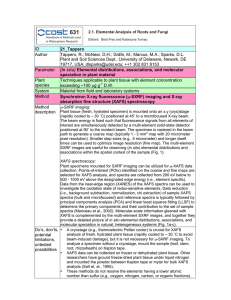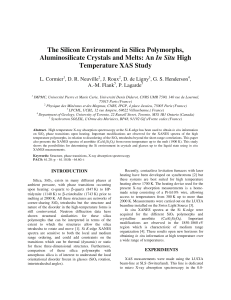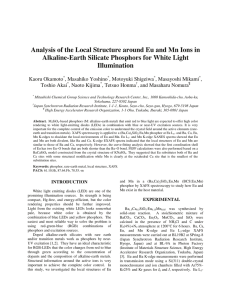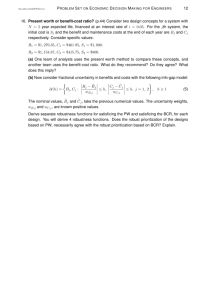Material properties and microstructure from
advertisement
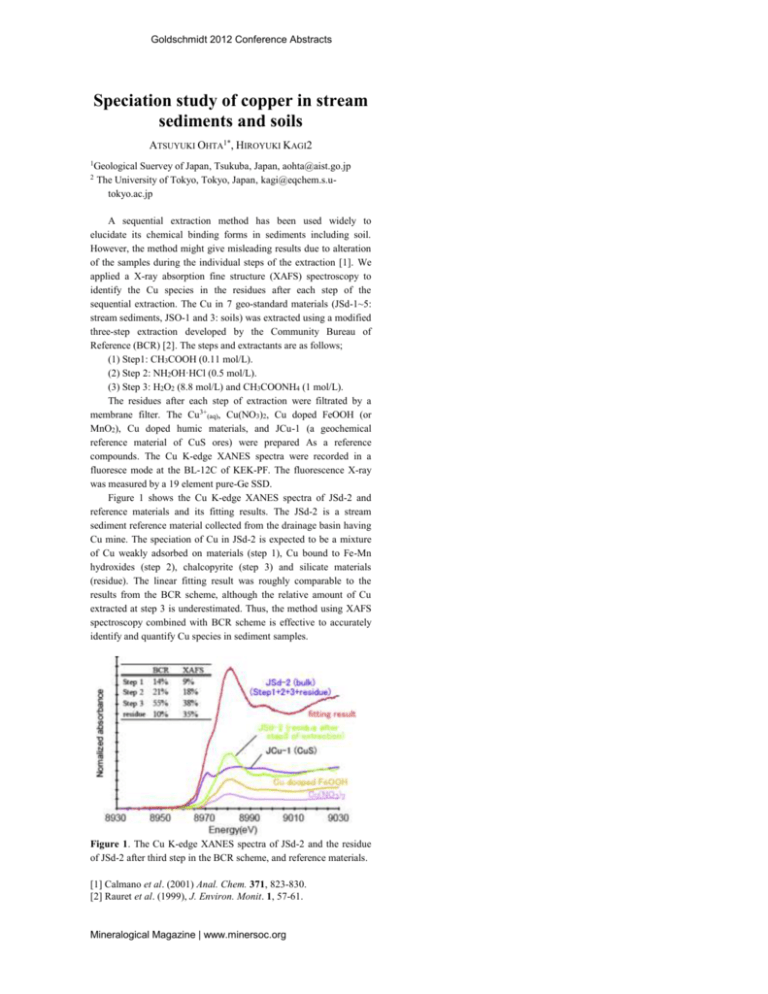
Goldschmidt 2012 Conference Abstracts Speciation study of copper in stream sediments and soils ATSUYUKI OHTA1*, HIROYUKI KAGI2 1Geological 2 Suervey of Japan, Tsukuba, Japan, aohta@aist.go.jp The University of Tokyo, Tokyo, Japan, kagi@eqchem.s.utokyo.ac.jp A sequential extraction method has been used widely to elucidate its chemical binding forms in sediments including soil. However, the method might give misleading results due to alteration of the samples during the individual steps of the extraction [1]. We applied a X-ray absorption fine structure (XAFS) spectroscopy to identify the Cu species in the residues after each step of the sequential extraction. The Cu in 7 geo-standard materials (JSd-1~5: stream sediments, JSO-1 and 3: soils) was extracted using a modified three-step extraction developed by the Community Bureau of Reference (BCR) [2]. The steps and extractants are as follows; (1) Step1: CH3COOH (0.11 mol/L). (2) Step 2: NH2OH·HCl (0.5 mol/L). (3) Step 3: H2O2 (8.8 mol/L) and CH3COONH4 (1 mol/L). The residues after each step of extraction were filtrated by a membrane filter. The Cu3+(aq), Cu(NO3)2, Cu doped FeOOH (or MnO2), Cu doped humic materials, and JCu-1 (a geochemical reference material of CuS ores) were prepared As a reference compounds. The Cu K-edge XANES spectra were recorded in a fluoresce mode at the BL-12C of KEK-PF. The fluorescence X-ray was measured by a 19 element pure-Ge SSD. Figure 1 shows the Cu K-edge XANES spectra of JSd-2 and reference materials and its fitting results. The JSd-2 is a stream sediment reference material collected from the drainage basin having Cu mine. The speciation of Cu in JSd-2 is expected to be a mixture of Cu weakly adsorbed on materials (step 1), Cu bound to Fe-Mn hydroxides (step 2), chalcopyrite (step 3) and silicate materials (residue). The linear fitting result was roughly comparable to the results from the BCR scheme, although the relative amount of Cu extracted at step 3 is underestimated. Thus, the method using XAFS spectroscopy combined with BCR scheme is effective to accurately identify and quantify Cu species in sediment samples. Figure 1. The Cu K-edge XANES spectra of JSd-2 and the residue of JSd-2 after third step in the BCR scheme, and reference materials. [1] Calmano et al. (2001) Anal. Chem. 371, 823-830. [2] Rauret et al. (1999), J. Environ. Monit. 1, 57-61. Mineralogical Magazine | www.minersoc.org


